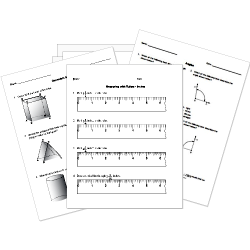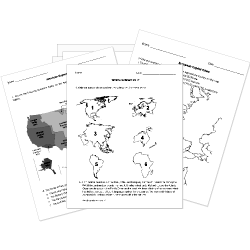Zeroth Law of Thermodynamics & Energy Transfer
Zeroth Law of Thermodynamics & Energy Transfer
This lesson aligns with Next Generation Science Standards (NGSS) PS3.B
Introduction
Thermodynamics is a branch of science that deals with the study of energy, heat, temperature and their transformations. It provides a framework for understanding how energy moves and changes within different systems. The Zeroth law of thermodynamics is a fundamental principle that governs the concept of temperature and establishes a basis for thermal equilibrium. This law defines that if two thermodynamic systems are each in thermal equilibrium with the third one, then they are in thermal equilibrium with each other. In this article, we will explore the Zeroth law of thermodynamics and its crucial role in energy transfer.
The Zeroth Law of Thermodynamics
The Zeroth law states that if two systems are in thermal equilibrium with a third system, they are also in thermal equilibrium with each other. This law is based on the measurement of temperature. It also provides a basis for understanding how heat flows from one object to another.

Role of the Zeroth Law in Energy Transfer
The Zeroth law of thermodynamics is fundamental in understanding energy transfer and the concept of thermal equilibrium. Let's delve into some key aspects:
Definition and Measurement of Temperature
The Zeroth law enables us to define and measure temperature. It establishes that two objects in thermal equilibrium have the same temperature. By using this principle, scientists have developed various temperature scales, such as Celsius and Fahrenheit. The temperature scales allow us to quantify and compare temperatures.
Thermal Equilibrium
The Zeroth law provides the foundation for the concept of thermal equilibrium. When two or more bodies at different temperatures come into contact, they attain a common temperature after some time, then they are said to exist in thermal equilibrium.
In other words, when two objects are in thermal equilibrium, there is no net transfer of heat between them.
For instance, if we put food in the refrigerator overnight, then the food attains a common temperature in the refrigerator. This means that the food is in thermal equilibrium with the air of the refrigerator. Consequently, heat no longer flows from the food to the air or from the air to the food and this state is known as thermal equilibrium.

Temperature Measurement Devices
The Zeroth law guides the design and calibration of temperature measurement devices. For instance, thermometers rely on the principle of thermal equilibrium to determine the temperature of an object. The process is done by measuring the expansion or contraction of a substance (such as mercury or alcohol) with temperature changes.

Heat Transfer
Heat transfer is defined as a process by which energy is exchanged between objects or systems due to temperature differences. The Zeroth law establishes that heat naturally flows from objects at higher temperatures to those at lower temperatures until thermal equilibrium is achieved.
Energy Efficiency
Understanding the Zeroth law of thermodynamics helps engineers design energy-efficient systems. By considering temperature differentials and heat transfer, it becomes possible to optimize energy conversion processes, minimize energy losses, and maximize useful work output.
Real-World Applications
The Zeroth law of thermodynamics finds practical applications in various fields. Here are a few examples:
HVAC Systems
Heating, ventilation, and air conditioning (HVAC) systems rely on the principles of the Zeroth law to control temperature and provide comfort.
Thermal Power Plants
Thermal power plants, such as coal-fired or nuclear power plants, convert heat energy into electricity. The Zeroth law is crucial in optimizing energy transfer processes within these plants, ensuring efficient energy conversion and minimizing heat losses.
Cooking and Food Processing
The Zeroth law is essential in the culinary arts and food processing industries. It allows chefs and food scientists to cook and process food effectively, ensuring proper cooking temperatures and minimizing food safety risks.
Climate Control
The Zeroth law influences the design of climate control systems for buildings, such as central heating and cooling systems.
Summary
- The Zeroth law of thermodynamics states that if two systems are in thermal equilibrium with a third system, they are also in thermal equilibrium with each other.
- The Zeroth law of thermodynamics is a fundamental principle that establishes the concept of temperature and thermal equilibrium.
- When two objects are in thermal equilibrium, there is no net transfer of heat between them.
- Heating, ventilation, and air conditioning (HVAC) systems rely on the principles of the Zeroth law to control temperature and provide comfort.
Related Worksheets:













